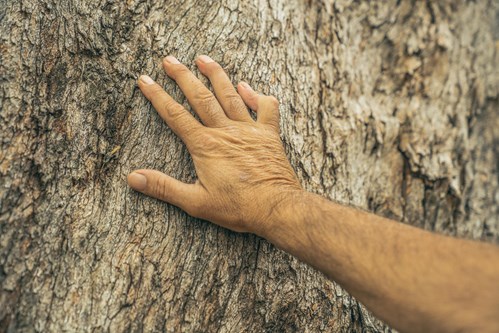
Caring for the environment is deeply rooted in everything we do
We embrace our responsibility to maintain and protect our plantation and custodial forests for a range of environmental, social and economic purposes, preserving them for generations to come.
 At HQP we are pioneers in sustainable forestry. We have been growing timber for more than a century and we know the health of our forests is crucial to our long-term success. Our forests – and the wildlife, water and soils within them – must be managed responsibly, so they can continue to provide their full range of benefits for both current and future generations.
At HQP we are pioneers in sustainable forestry. We have been growing timber for more than a century and we know the health of our forests is crucial to our long-term success. Our forests – and the wildlife, water and soils within them – must be managed responsibly, so they can continue to provide their full range of benefits for both current and future generations.
Environmental management is deeply rooted in everything that we do and very much at the core of our company. Our commitment to developing and implementing forest management systems, operations and practices consistent with internationally recognised forest stewardship standards is derived from our ethical investors, the community at large and the personal values of each of our employees to do the right thing.
We are custodians of our plantation and native forests. Our native forest buffers provide a range of conservation, community and other values. We actively protect these native forests and never harvest them.
While it's easy to imagine we are solely focused on growing plantation trees, we are also strongly committed to protecting and enhancing the native forest buffers that weave throughout our plantations and out into other state forests, national parks, defence reserves and private forests. These native forest buffers create wildlife corridors, protect watercourses, act as natural firebreaks and promote biodiversity within our plantations.
Our team considers their health and protection a priority and undertakes a range of management activities to safeguard these areas, including:
- prescribed burning to achieve a balance between protecting and enhancing biodiversity values and protecting neighbouring communities and our plantation assets
- weed and wildling management to maintain the integrity of the native forest
- regular water quality testing
- wildlife surveys.
Under both of the internationally recognised sustainable forest management certification standards, there is a requirement to identify areas under our management that may have high conservation value, and to ensure they are managed to maintain their special values.
The Forest Stewardship Standard, in particular, provides a comprehensive set of guidelines, and defines high conservation value areas as places that possess one or more attributes including:
- significant species diversity or high concentrations of threatened species
- significant landscape-level ecosystems and mosaics
- rare, threatened or endangered ecosystems and habitats
- critical ecosystem services
- forest areas fundamental to meeting basic needs of local communities
- forest areas critical to local communities’ traditional identity.
We have identified several areas across the forests we manage that meet one or more of these criteria.
Plantation productivity is a function of soil health and condition, together with other factors such as genetics, climate and pest and disease risk. The sustainability of our plantation estate in terms of growth is clearly and directly linked to the sustainability of land use practices.
To limit negative impacts on soil values, we:
- plan and implement activities to account for soil properties, particularly erosion hazard and compaction potential
- implement guidelines to reduce landslip risks on steep sites, including exclusion of harvesting where the risk is considered high
- avoid concentrating machine activity or remediate compacted areas following harvest
- implement harvest and site preparation systems that retain the majority of nutrient-rich organic material on site
- account for fluctuating water tables and associated machine traffic so as to avoid operating on sites prone to water-logging
- undertake fuel reduction burning that emphasises the need to retain the nutrient-rich duff layer above mineral soil.
We recognise the potential impacts our activities could have on water quality. All our operations include a site-specific assessment of the risks and associated controls, and operations are monitored closely to ensure that watercourses are not adversely impacted.
Examples of controls used to protect water quality include:
- extensive use of debris retention as an integral part of plantation establishment operations
- water course protection zones that take account of soil erosion, slope angle and length, catchment size and stream power index, and are based on accurate digital elevation models
- machinery trafficking guidelines that limit the extent and severity of permitted compaction and encourage use of preventative techniques such as placement of harvest debris over tracks to reduce impacts
- staff and contractor training that supports changes to guidelines
- selection of machine type or system to mitigate environmental risks
- recognising riparian vegetation of special significance in management planning
- reviewing plantation watercourse protection buffers between crop rotations to recognise and establish new plantations consistent with current guidelines
- managing stock grazing permits and similar agreements on freehold lands to reduce environmental impacts
- pre-harvest surveys for acid sulfate and potential acid sulfate soils in low-lying plantations adjacent to estuarine environments
- suspending log haulage operations during periods of prolonged wet weather or soil-saturated conditions to protect road surfaces and reduce off-site environmental impacts
- designing and constructing watercourse crossings mindful of fish passage requirements.
We work in partnership with various local catchment groups to monitor water quality on a network of permanent sites across our major catchments. Data is monitored for spikes in turbidity, salinity and pH levels above the acceptable water quality guidelines.
We also undertake a chemical monitoring program to ensure the herbicide products we use do not enter into our waterways.
We are committed to reducing our reliance on the use of chemicals for our forest management activities, where an equivalent or better economic, ecological or environmental outcome is possible.
Where chemical use is required, it’s our preference to use low toxicity and low residual formulations less frequently, while taking strict measures to ensure the impact of their application is minimised. The protective measures we take include:
- guidelines for the responsible storage and application of chemicals, and the disposal of any residues
- centralised control of herbicide purchases
- contract conditions for supply and application of herbicides and fertiliser, aerially and ground-based, that encourage best practice and innovation (e.g. use of low-drift nozzles and GPS tracking technology in aerial herbicide application)
- staff and contractor training in chemical application techniques and regular monitoring via in-house quality control systems
- prompt reporting and investigation of any incidents
- evaluation of alternative chemical products and application technologies to reduce environmental and operator risks and improve effectiveness
- specifying buffers around sensitive areas based on risk assessment.





